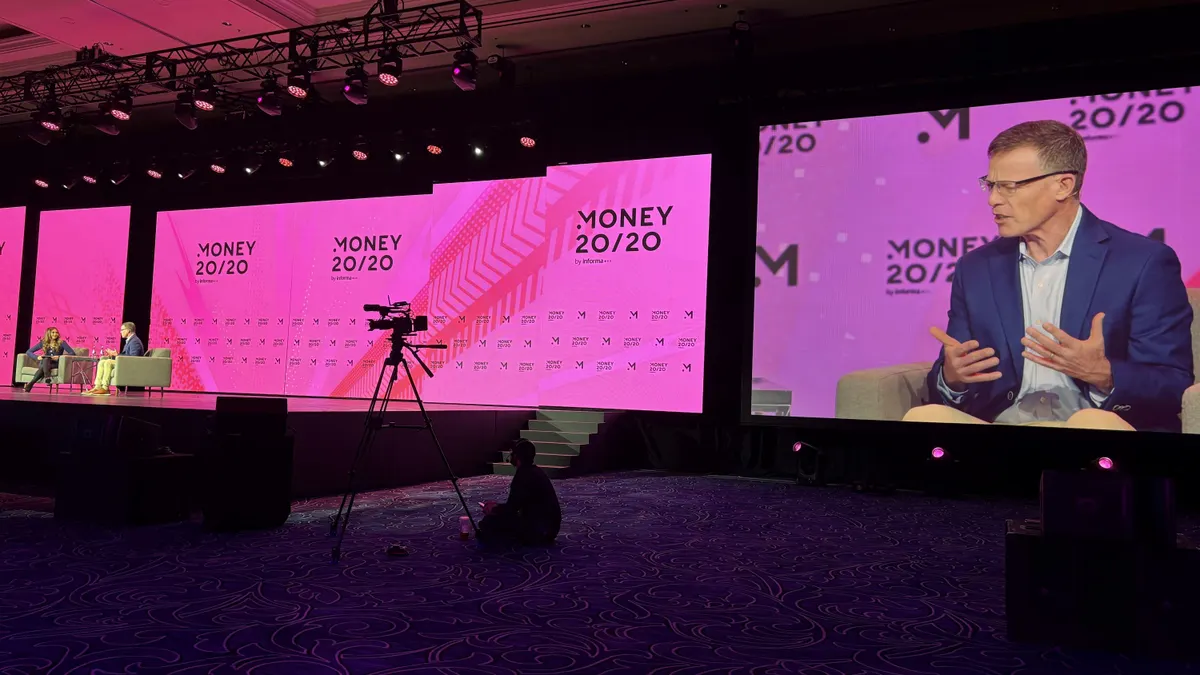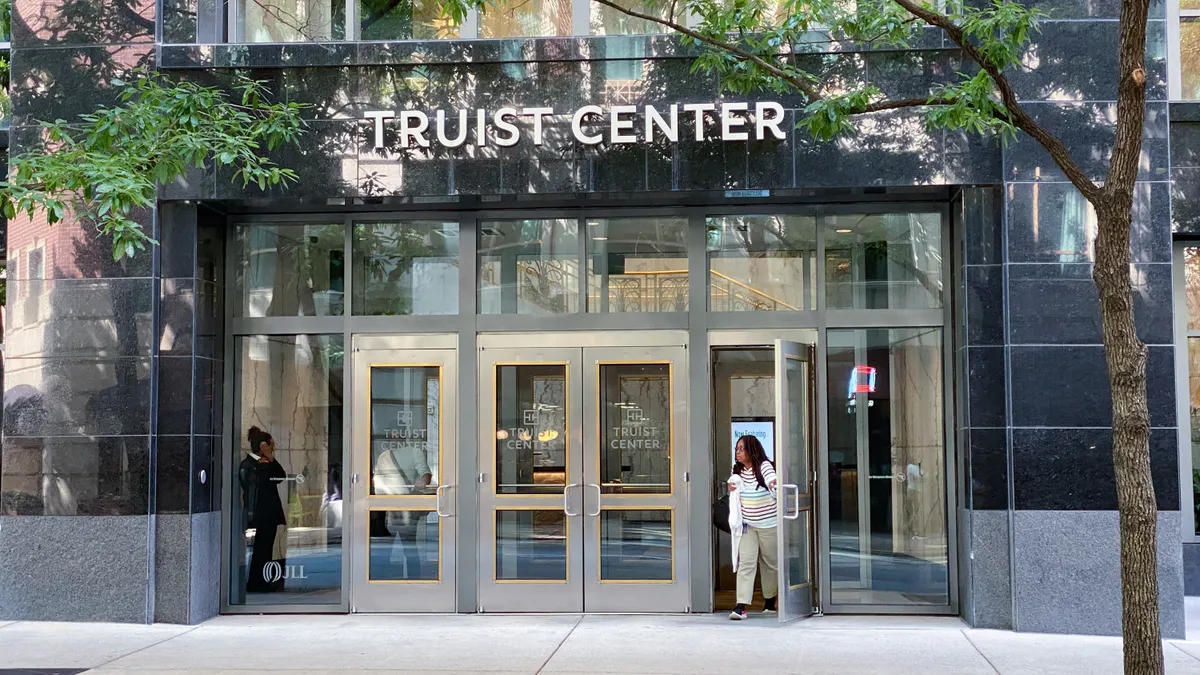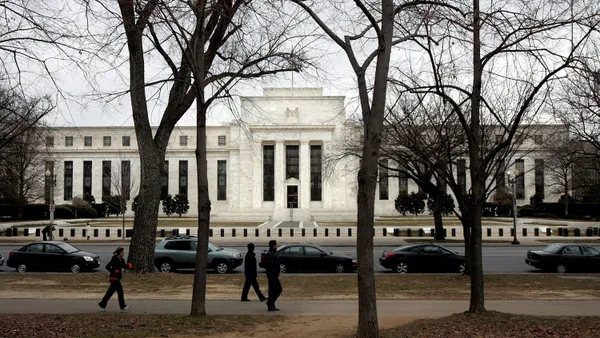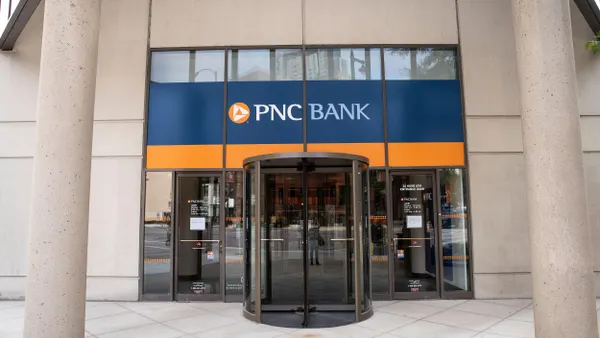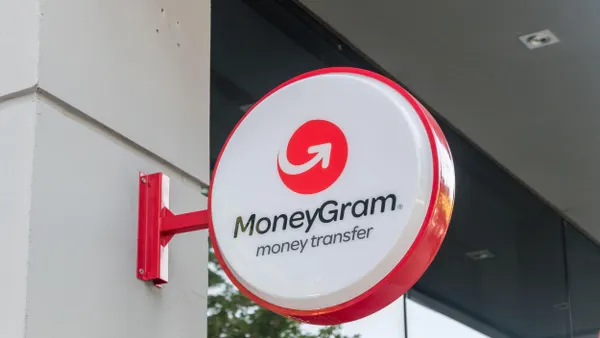Dive Brief:
- Credit card spending in March and early April fell by around 40% among a group of JPMorgan Chase’s U.S. customers compared to a year ago, according to a report by JPMorgan Chase Institute.
- The drop in spending is eight times steeper than average during the first month of unemployment in non-COVID times, according to the report.
- Meanwhile, data released Wednesday by Mastercard may indicate the beginning of an economic turnaround. Switched volume — payments the company authorizes, clears and settles — declined 6% in the week ending May 7, compared with a year ago. That’s up from a 22% decline in the week ending April 7.
Dive Insight:
Stay-at-home orders throughout much of the U.S. — combined with a spike in unemployment — have curbed spending since the coronavirus pandemic took hold. Diana Farrell, president and chief executive of JPMorgan Chase Institute, said the former has had a more profound impact than the latter.
"While surprising, we expect this may change over time as layoffs, furloughs and unemployment insurance further impact families’ bank accounts," Farrell told Reuters.
The study broke down spending by classes of items and by consumers' income brackets. Spending at restaurants dropped 70%, while consumers spent 50% less on non-essential items, according to the study, which measured only spending on Chase credit cards and did not take into account transactions made with cash, debit cards or other bank credit cards.
Essential spending, such as on groceries and health care, jumped 20% before decreasing, according to the report, which analyzed spending data from more than 8 million Chase credit card customers from March 1 to April 11.
Credit card users who reported household incomes of less than $39,000 reduced spending by 38%, while cardholders with incomes higher than $92,000, spent 46% less. Higher average spending by wealthier households explains the difference, the JPMorgan Chase Institute said.
Mastercard, meanwhile, looked at spending through the lens of four phases of economic impact: containment, stabilization, normalization and growth.
"We are starting to see the transition from the stabilization phase to the normalization phase in some markets, although it is very early days," Mastercard said, according to Bloomberg. Normalization occurs when social-distancing restrictions are relaxed, the payment network said.



